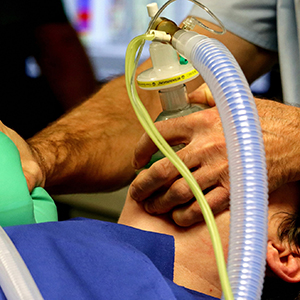Respiratory Intensive Care Unit management and efficacy during the COVID-19 outbreak in Naples, Italy

All claims expressed in this article are solely those of the authors and do not necessarily represent those of their affiliated organizations, or those of the publisher, the editors and the reviewers. Any product that may be evaluated in this article or claim that may be made by its manufacturer is not guaranteed or endorsed by the publisher.
Authors
The World Health Organization declared the Coronavirus Diseases 2019 (COVID-19) outbreak a global pandemic on March 11, 2020. COVID-19 had an impact on over 500 million people worldwide. According to the American Thoracic Society criteria, the respiratory spectrum of this disease ranges from mild illness to severe pneumonia, with the latter occurring in a not insignificant 15% of patients. A rapid increase in the incidence of COVID-19 pneumonia cases has been observed all over the world, resulting in a saturation of the Intensive Care Unit's capacity (ICUs). Because of this impressive outbreak, the ICU beds and invasive mechanical ventilators reached their capacity. Non-invasive supportive care has become an important option for keeping respiratory conditions under control. As a result, proper healthcare resource management was required to ensure adequate patient care. Respiratory Intensive Care Units (RICUs) have become a useful resource for managing complex patients due to a shortage of ICU capacity. This highlighted the importance of RICUs, where patients with moderate to severe respiratory failure can be treated with non-invasive respiratory support rather than being admitted to the ICU. The clinical outcomes and baseline characteristics of patients admitted to the RICU of Cotugno Hospital, a tertiary referral center in Naples (Italy), from January 2021 to October 2021 are described in this report.
How to Cite

This work is licensed under a Creative Commons Attribution-NonCommercial 4.0 International License.






